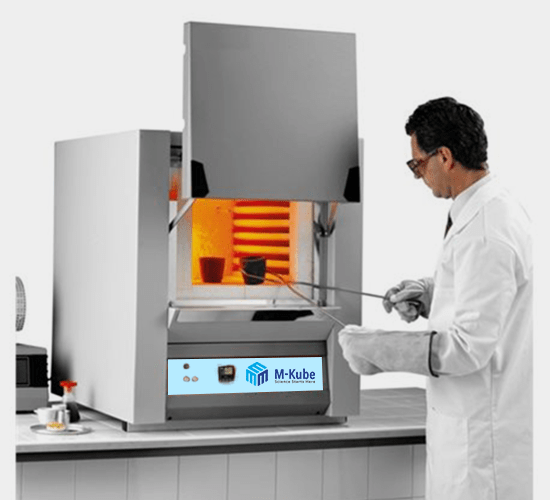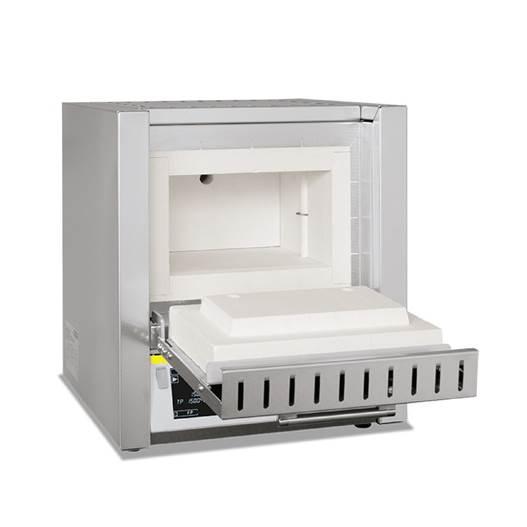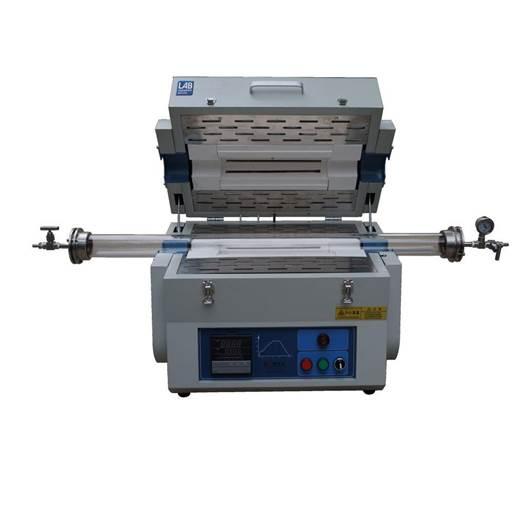
April 24, 2023
There are several types of furnaces commonly used in research work, each with its own benefits and limitations.


 In terms of capabilities, induction furnaces are capable of melting metals at temperatures up to 3000°C and can produce high-quality castings with excellent metallurgical properties. They can also be used for controlled heating and annealing processes, as well as for surface hardening and heat treatment of metals.
In terms of capabilities, induction furnaces are capable of melting metals at temperatures up to 3000°C and can produce high-quality castings with excellent metallurgical properties. They can also be used for controlled heating and annealing processes, as well as for surface hardening and heat treatment of metals.

Here are some of the most common types:
Muffle Furnace:
A muffle furnace is a type of furnace that is used to heat materials to high temperatures in a controlled environment. The furnace is usually made of a heat-resistant material such as ceramic or brick, and the material being heated is placed in a sealed chamber called a muffle. Benefits include good temperature control, high heating rates, and good thermal insulation. Limitations include a limited range of temperatures that can be achieved, typically up to around 1200°C.
Tube Furnace:
A tube furnace is a type of furnace that is used to heat materials in a long, cylindrical chamber. The furnace is usually made of a heat-resistant material such as ceramic or metal, and the material being heated is placed in a quartz or alumina tube that is heated by the furnace. Benefits include a wide range of temperatures that can be achieved, typically up to around 1700°C, and good temperature uniformity. Limitations include limited space for larger samples and a longer heating time.
Box Furnace:
A box furnace is a type of furnace that is used to heat materials in a rectangular chamber. The furnace is usually made of a heat-resistant material such as ceramic or metal, and the material being heated is placed on a tray inside the furnace. Benefits include a wide range of temperatures that can be achieved, typically up to around 1800°C, and a large chamber that can accommodate larger samples. Limitations include poor temperature uniformity and slower heating rates compared to other types of furnaces.Induction Furnace
Induction furnaces are highly efficient electric furnaces that use induction heating to melt metal. They are commonly used in the foundry industry for melting and pouring metals such as steel, iron, aluminium, and copper. In terms of research, there are many areas of interest when it comes to induction furnaces. For example, researchers may investigate ways to improve the efficiency of the heating process, optimize the melting process for specific metals or alloys, or develop new materials for the furnace’s components to increase its lifespan. Induction furnaces have several advantages over traditional furnaces, including faster melting times, greater efficiency, and less pollution. They can also melt a wide range of metals and alloys and are more flexible in terms of the amount of material that can be melted at one time. In terms of capabilities, induction furnaces are capable of melting metals at temperatures up to 3000°C and can produce high-quality castings with excellent metallurgical properties. They can also be used for controlled heating and annealing processes, as well as for surface hardening and heat treatment of metals.
In terms of capabilities, induction furnaces are capable of melting metals at temperatures up to 3000°C and can produce high-quality castings with excellent metallurgical properties. They can also be used for controlled heating and annealing processes, as well as for surface hardening and heat treatment of metals.
Vacuum Furnace
A vacuum furnace is a type of furnace that operates under a low-pressure environment or vacuum. The absence of air or other gases in the furnace during operation helps to prevent oxidation and contamination of the materials being processed. Vacuum furnaces are commonly used in various industries, including aerospace, automotive, electronics, and medical devices, to process materials such as metals, ceramics, and composites.
Some of the capabilities of a vacuum furnace include:
- Controlled Atmosphere Processing: Vacuum furnaces can process materials in a controlled atmosphere to minimize oxidation and contamination. This is useful when working with materials that are sensitive to the presence of air, such as titanium or certain alloys.
- High-Temperature Processing: Vacuum furnaces are capable of reaching high temperatures, making them suitable for heat treating, sintering, and other high-temperature processes. Some vacuum furnaces can reach temperatures up to 3000°C.
- Precise Temperature Control: Vacuum furnaces have precise temperature control, which is critical for many material processing applications. Temperature control is achieved using various methods, including heating elements, thermocouples, and sophisticated control systems.
- Uniform Heating: Vacuum furnaces provide uniform heating, which ensures that the entire material being processed is heated evenly. This is essential for producing high-quality materials that meet the required specifications.
- Batch and Continuous Processing: Vacuum furnaces are available in both batch and continuous processing configurations. Batch processing is suitable for small production runs, while continuous processing is ideal for large-scale production.
Related Items: furnaces for heat treatmenttypes of furnaces





